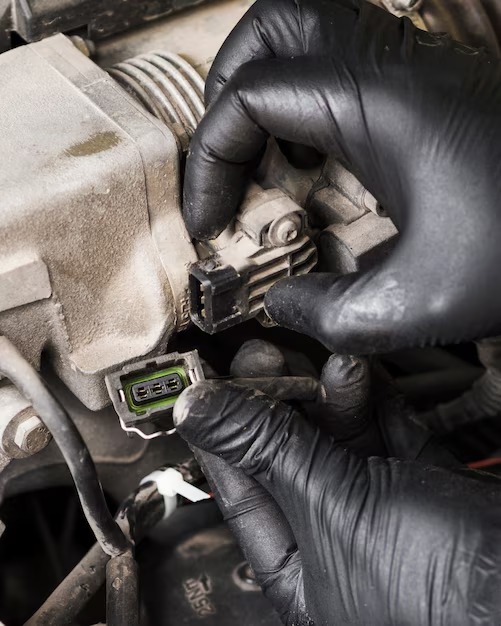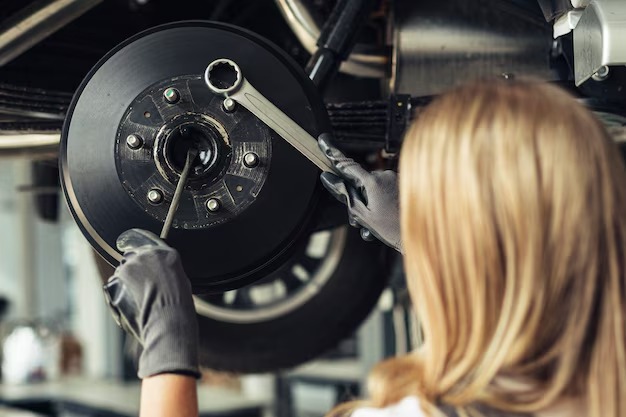Understanding Your Vehicle: How Many Axles Does a Car Have?
Diving deep into the intricate details of vehicle anatomy might feel overwhelming to many but understanding the basic structure of your automobile offers valuable insights. One of the less discussed yet significant elements of your vehicle’s structure is the axle. The axle is a core component in a vehicle’s construction, essential for the mechanisms of steering, driving, and braking. The number of axles varies among different types of vehicles and understanding how many your car has is broader than mere automotive trivia.
In the heart of your vehicle’s structure, axles play a crucial role in transportation. They endure the car’s weight, the thrust of acceleration and the forces of braking while bearing the burdens of bumpy roads or the impact of potholes. Despite these fundamental functions, the quantity of axles in a vehicle and how they function often get unnoticed. This article aims to explain the basics of vehicle axles, highlight their role, and differentiate the types of axles you find in typical vehicles.
Opportunities for learning about how vehicles are built and the way they function could be valuable to every driver. Just like knowing how many cylinders your engine has or understanding the difference between rear and front-wheel drive can shape your driving habits, understanding the number of axles in a car can be equally informative. It can help you grasp your vehicle’s capability and limitations and influence your driving style accordingly. Join us on a fascinating journey exploring the unsung heroes of your daily commute – the axles.
Unveiling the Concept: Defining the Axle in a Vehicle
An Introduction to the Axle
An axle is an integral part of a vehicle’s running gear, serving as the central component around which the wheels revolve. It bears the vehicle’s load and transmits driving torque to the wheels, making it absolutely essential for mobility.
A simple way of understanding the role of an axle is to visualize it as the rod or shaft that connects a pair of wheels on opposite sides of the vehicle. It provides the balancing fulcrum that supports the body of the car and facilitates the smooth movement of the vehicle by allowing the wheels to rotate.
Types of Axles
There are various types of axles, each designed for a specific purpose. Broadly, they can be categorized into two types: drive axles and dead axles.
- Drive Axles: These are connected to the engine via the transmission and differential. They provide power to the wheels, hence the name ‘drive’ axles. In four-wheel-drive vehicles, even the front axle could be a drive axle.
- Dead Axles: Also known as ‘non-drive’ axles, they don’t provide any power. Instead, they serve mainly as support for the vehicle’s weight. You’ll typically find these in the rear of front-wheel-drive cars.
The Role of Axles in Vehicles
Apart from aiding in wheel rotation and vehicle support, axles also play a significant part in bearing the strain of braking and acceleration. Moreover, the axle ensures the optimal angle of the wheels, contributing to the vehicle’s stability and control, particularly in turns and uneven terrain.
The Significance of Axles in Automobiles: Why Are They Indispensable?
For those without intimate knowledge of automotive design, understanding the vital role of an axle in any vehicle plays can be challenging to grasp. These crucial parts of every car might not draw the same attention as sparkly rims or a powerful engine, but underestimating their importance could lead to catastrophic effects. Hence, comprehending their contributions can lead to a safer and smoother driving experience.
The Fundamental Role of an Automobile’s Axle
Primarily, axles in automobiles support the weight of the vehicle and its passengers. They ensure that any burden placed on a car due to the collective weight of passengers, cargo, or even the car itself, does not overwhelm the structure of the vehicle. This function underlines the high durability and strength of these components.
Furthermore, they play a crucial role in driving, braking, and steering a car. By connecting the front and rear wheels, axles make rotational and linear motion possible, enabling the car to move forward or reverse. Without them, controlling a vehicle’s movement would be practically impossible.
Additional Essential Functions of an Axle
In addition to carrying weight and facilitating movement, axles hold more responsibilities under their belt. They absorb the shocks and stresses generated during accelerating, braking, and steering. This absorption helps maintain the stability of the vehicle, ensuring a smoother and more comfortable ride for its occupants.
Moving forward, axles partake in delivering power from the car engine to the wheels. In many front-wheel-drive cars, for example, the drive axles are responsible for transferring this power from the transmission to the wheels, hence propelling the vehicle forward.
By taking into account these vital functionalities, the indispensability of axles in automobiles becomes clear. Without them, our cars would not be able to move, steer, or even support their own weight. By celebrating and maintaining these under-appreciated car components, drivers can ensure their vehicles continue to provide reliable and efficient service throughout their lives.
Different Vehicle Categories: A Deep Dive into the Number of Axles
Every vehicle, no matter what type, has a critical component that plays a vital role in its operation – the axle. These are the parts that provide a location for the wheels to attach to the car, transfer power from the engine to make the wheels move, and handle the load of the vehicle. The number of axles in a car can differ based on the car’s size, purpose, and design. So, let’s dissect various vehicle models and understand their axles’ count.
Standard Cars/Sedans
Standard cars such as sedans, coupes, or hatchbacks are the most common vehicles on the road. These cars typically have two axles. The first axle is at the front of the car, linking the two front wheels, whereas the second axle is at the rear, connecting the two back wheels.
Sport Utility Vehicles and Trucks
Families often prefer sport utility vehicles (SUVs) for their spacious interiors, while trucks are chosen for their hauling capabilities. Similar to standard cars, these vehicles also usually feature two axles, though there are exceptions for larger models.
Larger Vehicles
When it comes to larger vehicles such as buses, motorhomes, or commercial trucks, the number of axles varies. Many of these types of vehicles typically have three or more axles. The additional axles are necessary to support the increased weight of these vehicles and evenly distribute the load.
Unique Vehicles
Some unique vehicles, like limousines or certain types of heavy machinery, can have an even higher number of axles. Due to their exceptional lengths, limousines often have more than two axles to adequately bear the vehicle’s length and weight. Similarly, heavy machinery or vehicles used in construction might have several axles to efficiently manage heavy loads.
To summarize, the axle count acts as a crucial element that sets apart different types of vehicles based on their design, purpose, and weight-bearing capacity.
Exploring Compact Cars: A Glimpse Into Single Axle Vehicles
Compact cars, a popular choice for city dwellers and budget-focused drivers, are examples of single axle vehicles. As the name suggests, these vehicles are equipped with one axle at the front and rear, providing drivers with a compact and fuel-efficient mode of transportation.
An axle can be defined as the central shaft for a rotating wheel or gear. Vehicle axles, therefore, are responsible for delivering power from the engine to the wheels. In the case of compact cars, this efficient power transfer is accomplished through a single axle, which helps in reducing the vehicle’s overall weight and increasing fuel efficiency.
Key Components of Single Axle Vehicles
- Single Axle: Compact cars have one axle for the front wheels and another for the rear, facilitating improved maneuverability in urban spaces.
- Lightweight: The reduced number of axles leads to lowered vehicle weight, enhancing fuel efficiency.
- Lower Maintenance: With fewer components, these vehicles typically require less maintenance compared to multi-axle vehicles.
Although compact cars with single axles may not offer the same carrying capacity as their multi-axle counterparts, they make up for it through improved fuel efficiency, easier handling, and lower maintenance costs. Whether it’s a busy professional seeking an easy commute or a budget-sensitive student needing a reliable ride, compact single axle vehicles make a compelling case for their consideration.
Understanding Vehicles with Dual Axles: A Common Feature in Sedans and SUVs
When it comes to automobiles, often, we might overlook the significance of some components. However, axles are amongst the vital ones that play a pivotal role in your vehicle’s performance. In vehicles such as sedans and SUVs, double axles are a typical feature that provides better handling, stability, and carry heavy loads.
These axles, often referred to as dual axles, play a critical role in transmitting power from the engine to the wheels. They ensure that the power is equally distributed among all wheels, providing a smooth ride and greater stability while traveling on challenging terrains. Moreover, they also contribute to the vehicle’s brake system, making it a key component for an automobile’s overall safety.
Types of Dual Axles
- Live Axles: In this type of axle, the drive shafts are rigidly mounted, transferring torque to the wheels directly. This axle type is prevalent in trucks and high-performance cars as it can bear heavy loads.
- Dead Axles: Unlike live axles, dead axles do not transmit torque to the wheels. This type is often found in front-wheel-drive cars. It helps the vehicle maintain its height from the ground and supports the weight of the vehicle during motion.
- Tandem Axles: These axles are typically found in larger vehicles such as commercial trucks. Tandem axles consist of two or more axles situated close to each other to distribute the weight of the vehicle evenly. They offer additional stability and load-bearing capacity.
Therefore, comprehending your vehicle’s axle setup can help you better understand your car’s performance and handling abilities. In dual-axle vehicles such as sedans and SUVs, this setup reveals much about the car’s safety provisions and ride comfort. It is crucial to regularly maintain and check your vehicle’s axles to ensure a safe and smooth driving experience.
The Unique Design of Large Vehicles: Comprehensive Look at Multiple Axle Trucks and Buses
When it comes to multiple axle vehicles such as large trucks and buses, they have a unique and complex design that sets them apart from regular cars. While a standard car typically has two axles, these larger vehicles can have more than that to support their weight and facilitate transportation.
Multiple Axle Trucks
Large trucks, like tractor-trailers or 18-wheelers, possess a complicated structure of axles. They have at least five sets of axles, some even going up to seven, which accounts for their nickname ’18-wheelers’. These additional axles are crucial for distributing the substantial weight of the cargo they haul, providing stability, and easing maneuverability. The first axle is usually a steering axle, followed by the drive axles, and finally, the trailer axles. Each has a specific role in the vehicle’s functioning and safety. The more axles a truck has, the more weight it can carry.
Multiple Axle Buses
Urban buses and long-distance coaches also follow a similar design blueprint. Most buses have two to three axles. The additional axle, found in three-axle buses, is used primarily to support the additional weight of the passengers and luggage. Buses with three axles not only distribute the load more evenly but also provide increased comfort for passengers due to the smoother ride. Furthermore, this design also extends the lifespan of the tires, as less pressure is exerted on each tire.
Understanding the unique structure of multiple axle vehicles such as trucks and buses can provide valuable knowledge on how these vehicles function, their carrying capacity, and their safety measures. Indeed, there’s more to these vehicles than meets the eye!
Determining the Quantity of Axles in Your Automobile
Recognizing the number of axles your vehicle has is sometimes essential, particularly when considering certain rules and regulations that pertain to different types of vehicles. An axle, to put it simply, is a rod that connects a pair of wheels in a vehicle. The actual count of axles in your vehicle is dependent on the type and size of the car. Fortunately, identifying the number of axles is not a complicated process and can be done quickly. Here’s how:
Easy Steps to Detect the Number of Axles
- Viewing from a side: One straightforward way to know the number of axles in your vehicle is by looking at it from the side. Count the number of separate points where the wheels attach to the vehicle, these are where the axles would typically be located.
- Physical examination: You can also determine the number of axles by doing a physical check. Crouch down beside your vehicle and inspect the undercarriage – the number of bars reaching across from one wheel to the other signifies the number of axles.
- Vehicle specification manual: Lastly, you can refer to your vehicle’s specification manual. Most manufacturers provide detailed specifications of the vehicle, including the number of axles, in the handbook that comes with the car.
You should remember that most standard cars or small trucks generally have two axles. However, larger vehicles like big SUVs, pickup trucks, and commercial vehicles may have more.
In conclusion, understanding the inner workings of your vehicle is fundamental for safety and maintenance purposes. Identifying the number of axles in your car is a crucial aspect of this understanding.
The Impact of Axles on the Performance of an Automobile
Axles are integral to the operation and functioning of any vehicle. They play a fundamental role in the transmission system, facilitating movement by transferring power from the engine to the wheels. This article will delve into the duties undertaken by axles in motor vehicle performance, from providing traction to enabling wheel rotation.
Facilitating Wheel Rotation
An automobile’s horsepower essentially begins at the engine and works its way to the wheels through a system of gear reductions. Serving as rods around which the wheels revolve, axles function as a critical connecting link between the engine and the wheels, transmitting this power that prompts wheel rotation. The speed at which the wheels turn is proportional to the power conveyed by the axles, thus underlining their influence over the speed and acceleration of the vehicle.
Traction and Vehicle Stability
In addition to prompting wheel rotation, axles are essential for providing traction and stability to the vehicle. This pivotal part of the automobile architecture assists the suspension system in two ways. Firstly, the axles counter the forces produced during acceleration and braking, which can otherwise cause the vehicle to roll over or skid. Secondly, it will help maintain the balance of the vehicle by evenly distributing the weight of the automobile across all four wheels. The axles play a crucial role in ensuring a smooth and safe driving experience by enhancing handling and control.
Axles and the Drive System
The configuration of the axles can immensely influence the overall driving experience and the vehicle’s performance. For instance, a vehicle that uses a rear axle drive, where the engine power is directed to the rear two wheels, tends to offer smooth handling. In contrast, a front axle drive system – where the engine power is sent to the front two wheels – is more prevalent in smaller cars and delivers better traction in adverse weather conditions. Yet another configuration is the all-wheel drive, where power is dispersed to all four wheels, providing enhanced traction and handling, especially in poor weather.
Considerations and Maintenance
Understanding the important role axles play in how a car functions should draw attention to their proper maintenance. Regular checks and upkeep of axles can help prevent possible breakdowns or performance issues, ensuring not just a smooth drive but also the safety of all passengers. Ensuring your axles are in good working condition is an essential aspect of vehicle upkeep.
Identifying Axle Issues: Recognising the Indications of Axle Breakages
In order to ensure the smooth running of your vehicle, it is crucial to understand the signs and symptoms of axle damage. The axle is a key component of your car’s mechanical system that serves the purpose of transmitting power from the engine to the wheels. Thus, any kind of problem with the axle can significantly hamper the performance of your car.
Let’s talk about some common indicators that signal a possible axle issue.
Clicking Noises
If you notice unusual clicking sounds whenever you make a turn, it might indicate a potential problem with your axle’s CV joint, which is responsible for allowing your car to make turns. Repetitive clicking sounds that get louder as you accelerate are a clear sign of worn-out CV joints that need to be replaced.
Grease Leak
A significant sign of possible axle damage is grease visibly leaking onto the tire’s interior edge or the underside of the vehicle. This indicates a torn CV boot leading to excessive grease leakage, which could physically damage the axle over time.
Hindered Driving
If you feel a noticeable rumbling or shaking while driving, especially while speeding up or taking turns, this could indicate a faulty axle. Any disruption in the axle system can lead to vibrations that you will feel directly in the steering wheel.
Physical Inspection
Lastly, a physical axle inspection can also reveal potential problems. If you notice an excessively worn or ruptured CV boot while checking the undercarriage of your car, it might indicate axle issues. Ignoring this could result in dust and debris entering the joint, causing further damage and a myriad of other problems.
It is always advisable to get professional help if you notice any of these signs. Ignored or untreated axle issues can lead to dangerous driving conditions and severe damage to the vehicle in the long run.
Understanding the Importance of Proper Car Axle Maintenance and Repair
The Importance of Car Axle Upkeep
The axle of a vehicle plays a crucial part in either driving, steering, or carrying the load of the car. Thus, it’s essential to maintain its condition for the safety and performance of the vehicle. Bear in mind that a compromised axle could endanger your car’s overall operation.
Examining Your Vehicle’s Axles
Regular inspection is an efficient way to prevent serious axle issues. This practice helps in identifying the early signs of axle damage like noises, vibrations, or performance issues during accelerating or braking. Frequently doing a full stop or driving at high speeds may strain the axle, so it’s important to keep this in mind during daily drives.
Repairing Car Axle Issues
In dealing with axle problems, it’s often preferable to seek professional assistance. Car axles consist of many parts, making it hard for an inexperienced person to make accurate repairs. Leave it to experts who have the right tools and knowledge to get the job done accurately and safely.
Replacing a Broken Axle
If the axle is damaged beyond repair, replacing it can be the best solution. To do so, let a trained technician examine it and suggest the right replacement based on your vehicle model and the role the axle plays in it.
- Preventive Measures for Car Axle Issues
- Maintaining proper tire inflation can reduce stress on the axle.
- Avoiding harsh driving conditions and overloading the car can extend the axle’s lifespan.
- Regular vehicle maintenance checks can detect potential axle problems early on, preventing costly repairs and safety hazards.
Bear in mind, understanding your vehicle encompasses knowing its axle condition and how to maintain or replace it. This knowledge can save money, prevent accidents, and extend the vehicle’s lifespan.
How to Prolong the Life of Your Vehicle’s Axles: Strategies for Car Owners
For keeping your vehicle rolling smoothly and safely on the road, the axles are crucial and understanding how to maintain this component can save car owners both time and money. Remember, a worn or damaged axle can be dangerous as it may fail while you are driving. So, let’s delve into some practical strategies to help extend the life of your car axles.
Mindful Driving Habits
Likewise, driving in a gentle manner is one of the key tactics to increasing your axle’s lifecycle. Avoid sudden acceleration or braking, and make it a point to slow down significantly over speed bumps or when entering or exiting a driveway. These measures might seem minor, but will greatly reduce strain on your axles.
Regular Servicing
Maintenance checks at regular intervals are a must. During these inspections, professionals can identify and fix budding axle problems early. It’s best to seek expert help when it comes to such important and complex components of your car.
Proper Lubrication
Lubricating your car’s axles is also crucial to maximizing their lifespan. With the right amount of grease, friction between the axle and wheel bearing is reduced, thereby resulting in lesser wear and tear. Refer to your vehicle’s owner’s manual or consult an automotive technician about the correct type and amount of lubricant to use.
Addressing Issues Promptly
Lastly, ensure any suspected errors or issues with your car’s axles are quickly addressed. Whether it’s an unusual noise, change in handling, or vibration during driving, these signs should never be ignored. Ignoring these symptoms may worsen the condition, resulting in costly repairs, or in the worst case, a total axle failure.
Driving consciously, ensuring regular maintenance, applying the correct lubricant, and fixing issues promptly can significantly lengthen your axles’ life expectancy thus ensuring your vehicle remains reliable, safe, and functional for longer.
FAQ: How many axles does a car have
What are some tips for maximizing my car axle lifespan?
Regularly clean and inspect your axles for wear and tear; grease or lubricate them often; avoid overloading your car; and make sure to drive carefully to prevent damage from potholes and other road hazards. Also, make sure to bring your car in for regular maintenance checks.
How does regular cleaning affect the lifespan of my axles?
Regular cleaning helps you spot and fix issues early on, preventing further damage. Dirt and grit can cause wear and tear over time, so keeping your axles clean can significantly improve their lifespan.
Why and how often should I lubricate my car axles?
Lubrication reduces the friction between moving parts of your axle, which can cause wear over time. It is generally recommended that car axles should be lubricated every 3,000 to 5,000 miles, or as recommended by your vehicle manufacturer’s guidelines.
How does overloading damage axles?
Overloading puts additional pressure on your axles, which can lead to increased wear and tear, or even breakage. It’s important to be aware of your vehicle’s load capacity and not to exceed it.
How can driving habits impact the lifespan of my car axles?
Aggressive driving, such as speeding and taking corners too hard, as well as hitting potholes or curbs can damage axles and other components. Smooth, careful driving can help preserve the life of your car axles.
What are the signs that my car axles need to be replaced?
Common signs include loud clunking noises when you drive, vibrations or shudders during acceleration, and difficulty steering or turning. If you notice any of these symptoms, it’s best to get your car checked by a professional.
Does regular maintenance checks include checking axles?
Yes, a thorough vehicle maintenance check should include inspecting the axles. Professionals can spot potential issues that can be addressed before they become serious problems.
Do all cars have the same axle lifespan?
No, the lifespan of a car axle can vary greatly depending on several factors like the quality of the axle, the type of car, driving conditions, and how well it is maintained. Following tips such as the ones above can extend the lifespan of your axles.
What is a stub axle, and how does it contribute to a vehicle’s functionality?
A stub axle is a crucial component in the wheel assembly that helps secure the wheel to the vehicle while allowing it to rotate freely.
What distinguishes a semi-floating axle from other axle types, and where is it commonly used in vehicles?
A semi-floating axle supports both the vehicle’s weight and the rotational force from the wheels. It is often found in passenger cars.
What is the function of an axle shaft, and where is it typically located in a vehicle?
An axle shaft transfers power from the vehicle’s transmission to the wheels, enabling them to rotate. It is usually located inside the axle housing.
Could you explain the concept of a floating axle and its role in vehicles?
A floating axle supports the weight of the vehicle and transfers rotational force from the wheels. It does not provide additional power to the wheels.
Why do most passenger cars have two axles, and where are these axles located on the vehicle?
Most passenger cars have two axles. The front axle is located at the front of the vehicle, while the rear axle is situated at the rear.
What is the significance of knowing how many axles a car has, and how can you determine this information?
Knowing the number of axles in a car is essential for understanding its design, weight distribution, and capabilities. You can typically determine the number of axles by counting the pairs of wheels on the vehicle.
What are the different types of axles commonly used in vehicles, and how do they differ in terms of design and function?
Common types of axles include semi-floating, three-quarter floating, and full-floating axles. They differ in how they support weight and rotational force.
When might a vehicle have four axles, and what purposes do these additional axles serve?
Vehicles with four axles are often larger or specialized vehicles used for heavy-duty tasks, where the added axles provide greater load-bearing capacity.
How do front and rear axles contribute to the overall stability and control of a vehicle?
Front and rear axles play a vital role in maintaining a vehicle’s stability and control by supporting the vehicle’s weight and transmitting power to the wheels.
What is the role of an axle housing, and how is it connected to the axles in a vehicle?
An axle housing encases and protects the axles, providing support and protection. It is connected to the axles at the wheel ends.
Why are pre-designed axles essential in vehicle manufacturing, and what are some considerations when customizing axles for specific purposes?
Pre-designed axles streamline vehicle manufacturing, but customization is necessary for specialized applications, involving modifications like strengthening, lengthening, or altering axle shafts.
How does knowing the number of axles on a vehicle help car experts or mechanics when performing maintenance or repairs?
Knowledge of the number of axles aids experts in understanding a vehicle’s design, load-bearing capabilities, and potential maintenance or repair needs.
What is the role of an axle casing in vehicles, and where is it typically located?
An axle casing is a protective housing that encases the axle components. It is often located at the wheel ends and supports the vehicle’s weight.
Why might a vehicle have more than two axles, and in what situations can these additional axles be beneficial?
Vehicles with more than two axles are suitable for heavy-duty or specialized tasks where greater load-bearing capacity, stability, or control is required.






